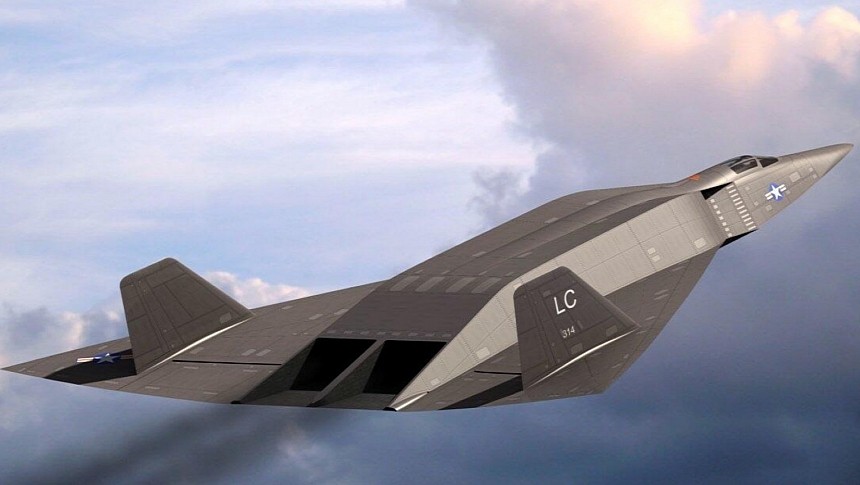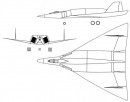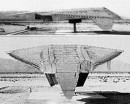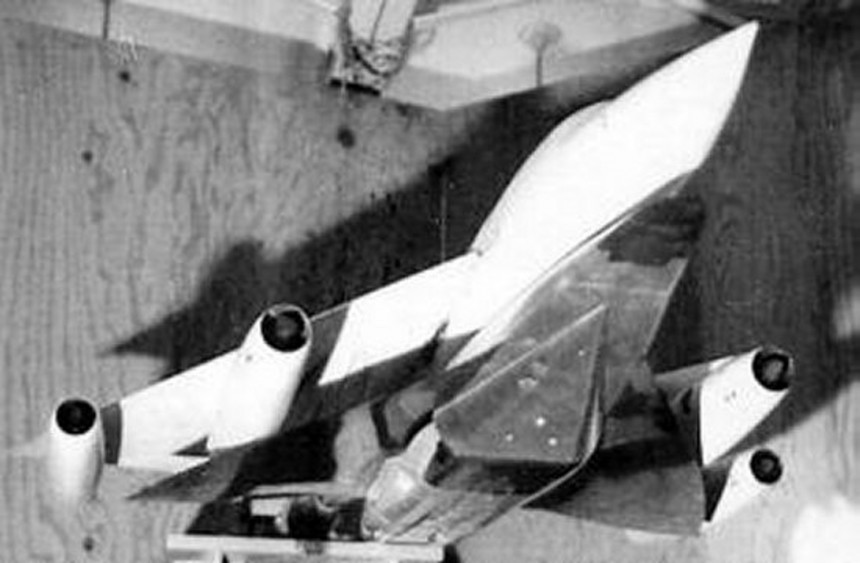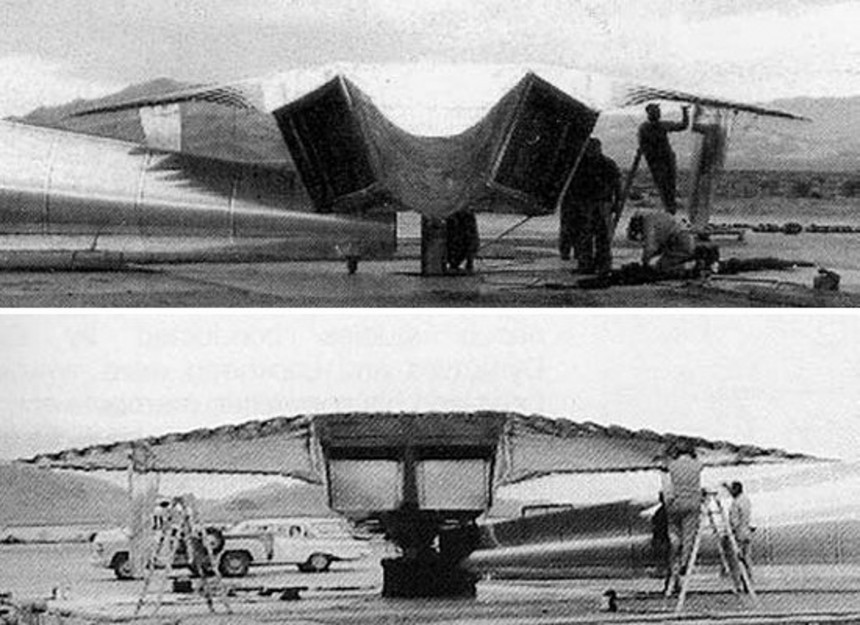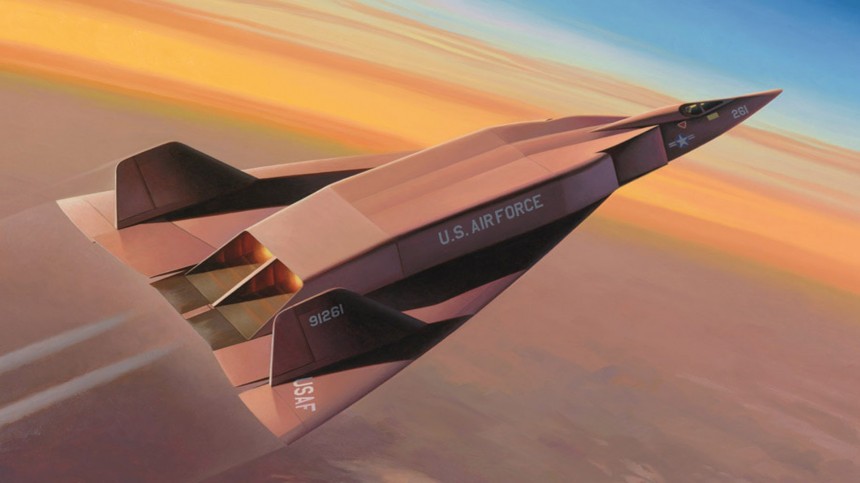In the perennial game of aeronautical anatomy-waving contests, the Lockheed SR-71 Blackbird wins every time. All the world's achievements in aviation in the last 120 years don't hit home in most folk's minds the way the Blackbird's blistering Mach 3-plus top speed. The fact the Soviets never shot one down is just extra thick American gravy slathered on top. But in an alternate timeline where the CIA made an even slightly different decision, things could've been far different.
In the timeline where the U.S. Air Force and the CIA picked the Convair Kingfish over Lockheed's A-12/SR-71 program, they would've had an even crazier, possibly even more capable supersonic reconnaissance jet than what they wound up fielding. Of course, it's all just hypothetical, but who doesn't love diving off the deep end into that realm occasionally? Once you get a look at concept renderings of what the Kingfish would have looked like, it's hard not to get these ideas in your head. But to understand the impetus of the Kingfish and the A-12, we need to familiarize ourselves with their common ancestor, the U-2.
Lovingly nicknamed the Dragon Lady, the Lockheed U-2 redefined the upper limits of aerial reconnaissance. With peak altitudes in excess of 80,000 feet (24,000 m), the U-2 could loiter over enemy territory or just outside of it and take vast quantities of detailed photos of priority targets before flying back home. But there was a problem. By most metrics, the U-2 was slower than molasses in January. They were easy targets for newly-implemented Soviet S-75 Dvina surface-to-air missiles that shot down at least five U-2s during recon missions over Cuba, China, and the USSR.
Even before the U-2's deployment in the mid-1950s, CIA personnel feared that Soviet air defenses would greatly limit its capabilities. What was required was an all-new supersonic airframe. One that was so quick in a straight line that its radar cross section would return as little more than background noise on enemy tracking screens as radar dishes struggled to track it. This, the CIA believed, was the only way to prevent incidents like the shootdown of Gary Powers and Rudolf Anderson Jr from happening again. Among the companies submitting design proposals for the CIA's new requirements, two front runners soon made themselves apparent.
On one side, there was the Lockheed team who'd designed and built the U-2 in the first place. In the time before the A-12/SR-71 design was finalized, a few altogether different proposals were considered and dubbed Archangel 1 and Archangel 2. These two designs were further fleshed out into an altogether different design theorized run on then-novel liquid hydrogen fuel and dubbed the CL-400 Suntan. On the other side was the San Diego-based Convair. Created through the merger of Consolidated Aircraft and Vultree Aircraft during World War II, the firm was most well-known for developing the Mach 2-capable B-58 Hustler strategic bomber. Through the Hustler's development, Convair gained vital insights into the ins and outs of ultra-high-speed flight.
Convair's initial design proposal to replace the U-2 was dubbed the Super Hustler for this reason. It consisted of a baffling two-stage aircraft consisting of a human-crewed front portion with an unoccupied booster section flanked by ramjet engines on all sides. When deployed from the undercarriage of a B-58B Hustler carrier plane, the residual speed from the mother ship would ignite the Super Hustler's ramjet, sending it north of triple the speed of sound before the rear portion dropped away. Its bizarre configuration made its concept drawings resemble a spacecraft more than an airplane. Funnily enough, a ramjet-powered booster vehicle did wind up being built in the form of the AQM-60 Kingfisher target drone.
Lockheed and Convair duked it out on the drawing board with their designs for a chance at one of the all-time classic military-industrial complex contracts under the codename Project Gusto. The committee chosen to pick the winner between the two was an ensemble cast of some of America's brightest minds in the technology of the day. Headed by the founder of the Polaroid Corporation, Edwin H. Land, the pairing of an icon in commercial photography and a world-class reconnaissance jet was a match built to last.
But Convair's design needed to become less needlessly complex before their proposal hit Land's desk. Under the new Gusto initiative, Convair's engineers opted for a more streamlined single-stage to altitude aircraft. The change was cemented when the B-variant of Convair's B-58 Hustler, the planned mothership, was canceled. Through rudimentary sketches and mockups from the period and computer renderings of the present day, we can see how First Invisible Super Hustler (FISH) almost resembles an SR-71 on steroids. Or, it resembles an aircraft far newer than it was, at the very least. It could be the F-22s contemporary in some depictions, no seriously.
After a time, the FISH initiative became Project Kingfish. Had it been built, its fuselage was set to be built using a high degree of honeycomb-pattern stainless steel to help the jet bear the structural load of the gargantuan heat and friction of flight at three or even four times the speed of sound. Special glass-ceramic composite materials designed specifically for Project Kingfish were proposed to help with the same endeavor while a set of pop-out turbojet engines could have been deployed upon landing. These seemingly magic tiles were developed by Corning Glass Works of Corning, New York, and would have supplied Convair with their highest-grade heat ablating ceramics for Kingfish had it gotten the green light.
Later on, similar ceramic tiles were instrumental to the Space Shuttle program for three decades, to its benefit and detriment at various points. Additionally, at least some degree of fiberglass was due to be implemented in Kingfish's design, the same stuff Chevy Corvette bodies were made of at that time. Though its engine configuration was never finalized, it's said that Convoir inquired with the Marquardt Corporation of Southern California to supply purpose-built ramjet engines for use on Project Kingfish.
On paper, at least, the Convair Kingfish would have been even faster than the A-12 or SR-71 on account of its ramjet hardware. Rumor has it that it would have been more resistant to detection by enemy radar thanks to its delta wing configuration and its partially shrowded engine nacelles similar to the F-117 Nighthawk from 25 years later. But Convair's wealth of innovative design principles couldn't compensate for a lack of a leader figure the caliber of what Lockheed offered. Lockheed's chief engineer, Clarence "Kelly" Johnson, had continually delivered all-time great military aircraft designs since before World War II.
The aircraft accredited to Johnson's genius included timeless heavyweights like the P-38 Lightning, P-80 Shooting Star, F-104 Starfighter, and eventually the A-12, YF-12, and SR-71 through Lockheed's top secret Skunkworks offshoot. Compared to Johnson's mythic status as a battle-tested veteran of delivering on his promises, the CIA, U.S. Air Force, and Project Gusto committee agreed that Lockheed was more suited to spying on the Soviets on the ragged edge of hypersonic.
Though Lockheed delivered on its design once again with its more conventional A-12 with traditional Pratt & Whitney turbojet engines, the later SR-71 was susceptible to detection by enemy radar and was even damaged by surface-to-air missile fire on one occasion. As satellites slowly usurped aircraft as America's upper echelon of strategic reconnaissance, the Blackbird ultimately found itself made redundant after the late 1990s. Could things have been different if the faster, obsensibly more-capable Convair Kingfish were selected instead? Could it even still be flying today like the U-2 is?
As interesting of a hypothetical as this alternate history might sound, it's bound to stay just that, as it's been for the last six decades and change. Though we have to say, renderings of the Kingfish are inarguably badass. It almost makes us wish we could have seen the thing in the flesh.
Lovingly nicknamed the Dragon Lady, the Lockheed U-2 redefined the upper limits of aerial reconnaissance. With peak altitudes in excess of 80,000 feet (24,000 m), the U-2 could loiter over enemy territory or just outside of it and take vast quantities of detailed photos of priority targets before flying back home. But there was a problem. By most metrics, the U-2 was slower than molasses in January. They were easy targets for newly-implemented Soviet S-75 Dvina surface-to-air missiles that shot down at least five U-2s during recon missions over Cuba, China, and the USSR.
Even before the U-2's deployment in the mid-1950s, CIA personnel feared that Soviet air defenses would greatly limit its capabilities. What was required was an all-new supersonic airframe. One that was so quick in a straight line that its radar cross section would return as little more than background noise on enemy tracking screens as radar dishes struggled to track it. This, the CIA believed, was the only way to prevent incidents like the shootdown of Gary Powers and Rudolf Anderson Jr from happening again. Among the companies submitting design proposals for the CIA's new requirements, two front runners soon made themselves apparent.
On one side, there was the Lockheed team who'd designed and built the U-2 in the first place. In the time before the A-12/SR-71 design was finalized, a few altogether different proposals were considered and dubbed Archangel 1 and Archangel 2. These two designs were further fleshed out into an altogether different design theorized run on then-novel liquid hydrogen fuel and dubbed the CL-400 Suntan. On the other side was the San Diego-based Convair. Created through the merger of Consolidated Aircraft and Vultree Aircraft during World War II, the firm was most well-known for developing the Mach 2-capable B-58 Hustler strategic bomber. Through the Hustler's development, Convair gained vital insights into the ins and outs of ultra-high-speed flight.
Lockheed and Convair duked it out on the drawing board with their designs for a chance at one of the all-time classic military-industrial complex contracts under the codename Project Gusto. The committee chosen to pick the winner between the two was an ensemble cast of some of America's brightest minds in the technology of the day. Headed by the founder of the Polaroid Corporation, Edwin H. Land, the pairing of an icon in commercial photography and a world-class reconnaissance jet was a match built to last.
But Convair's design needed to become less needlessly complex before their proposal hit Land's desk. Under the new Gusto initiative, Convair's engineers opted for a more streamlined single-stage to altitude aircraft. The change was cemented when the B-variant of Convair's B-58 Hustler, the planned mothership, was canceled. Through rudimentary sketches and mockups from the period and computer renderings of the present day, we can see how First Invisible Super Hustler (FISH) almost resembles an SR-71 on steroids. Or, it resembles an aircraft far newer than it was, at the very least. It could be the F-22s contemporary in some depictions, no seriously.
After a time, the FISH initiative became Project Kingfish. Had it been built, its fuselage was set to be built using a high degree of honeycomb-pattern stainless steel to help the jet bear the structural load of the gargantuan heat and friction of flight at three or even four times the speed of sound. Special glass-ceramic composite materials designed specifically for Project Kingfish were proposed to help with the same endeavor while a set of pop-out turbojet engines could have been deployed upon landing. These seemingly magic tiles were developed by Corning Glass Works of Corning, New York, and would have supplied Convair with their highest-grade heat ablating ceramics for Kingfish had it gotten the green light.
On paper, at least, the Convair Kingfish would have been even faster than the A-12 or SR-71 on account of its ramjet hardware. Rumor has it that it would have been more resistant to detection by enemy radar thanks to its delta wing configuration and its partially shrowded engine nacelles similar to the F-117 Nighthawk from 25 years later. But Convair's wealth of innovative design principles couldn't compensate for a lack of a leader figure the caliber of what Lockheed offered. Lockheed's chief engineer, Clarence "Kelly" Johnson, had continually delivered all-time great military aircraft designs since before World War II.
The aircraft accredited to Johnson's genius included timeless heavyweights like the P-38 Lightning, P-80 Shooting Star, F-104 Starfighter, and eventually the A-12, YF-12, and SR-71 through Lockheed's top secret Skunkworks offshoot. Compared to Johnson's mythic status as a battle-tested veteran of delivering on his promises, the CIA, U.S. Air Force, and Project Gusto committee agreed that Lockheed was more suited to spying on the Soviets on the ragged edge of hypersonic.
Though Lockheed delivered on its design once again with its more conventional A-12 with traditional Pratt & Whitney turbojet engines, the later SR-71 was susceptible to detection by enemy radar and was even damaged by surface-to-air missile fire on one occasion. As satellites slowly usurped aircraft as America's upper echelon of strategic reconnaissance, the Blackbird ultimately found itself made redundant after the late 1990s. Could things have been different if the faster, obsensibly more-capable Convair Kingfish were selected instead? Could it even still be flying today like the U-2 is?
